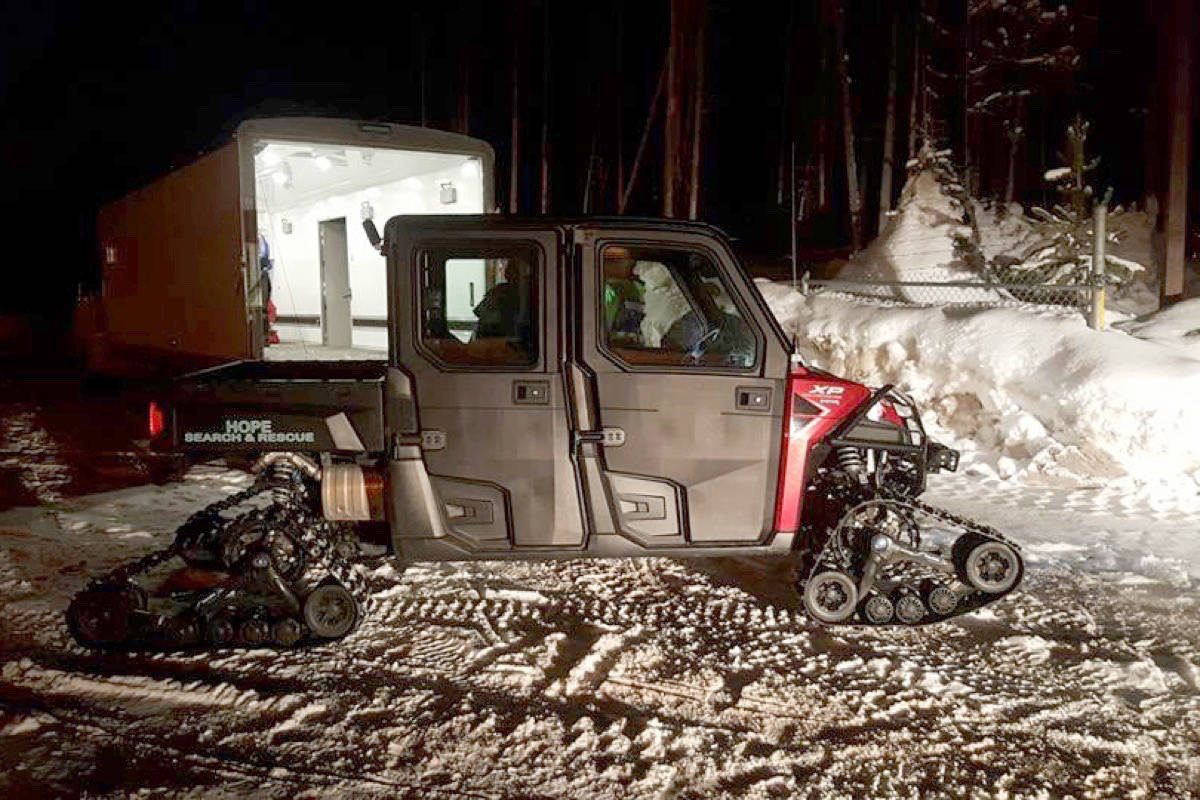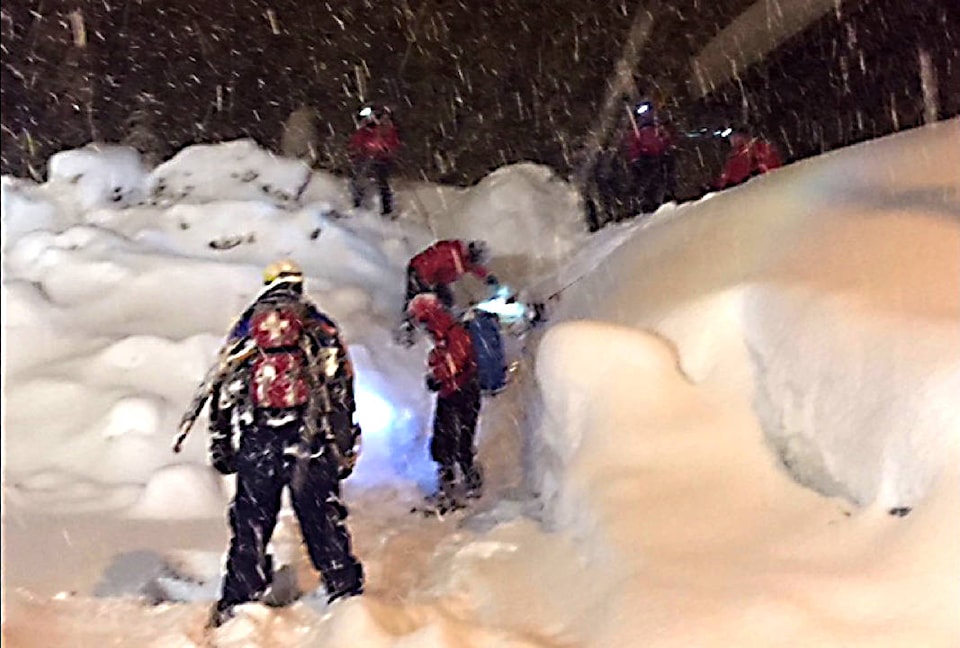Hope Search and Rescue had two calls in the backcountry near the Coquihalla Summit this weekend.
Saturday a lost skier was rescued near Zoa Peak and Sunday an injured snowshoer was brought down from near Flat Iron Needle Peak; search and rescue manager Mario Levesque said weather made both rescues more challenging than usual.
Crews used snowmobiles to locate the stranded skier Saturday. Due to challenging terrain around Zoa Peak they then had to make their way on foot to where the skier had built a shelter.
“They had to come up and down in ravines and in between trees, lots of brushes and stuff. Slow going,” Levesque said.
At 8:00 p.m. Hope Search and Rescue said they could hear the skier and the skier texted stating he could see a searchlight. Seven minutes later, the skier was found.
Sunday searchers were called by the RCMP to an area near Flat Iron Peak along Highway 5, where an injured snowshoer was located.
The team set out around 1 p.m. By the time the individual was located, the weather was worsening and the team had to carry the snowshoer down instead of using a helicopter.
“The weather was not co-operating,” Levesque said. Six search and rescue members bundled up the snowshoer and brought them down, all the while dealing with 10 to 12 centimetres of snow within three hours.
For backcountry enthusiasts, Levesque said it is crucial to check the weather and the avalanche rating. He said they also need to take a pack with water, food, a compass, flashlight with spare batteries, cell phone and a whistle.
A cell phone can be a great locating tool, as long as those going out keep their phone well charged and are within an area which has coverage.

